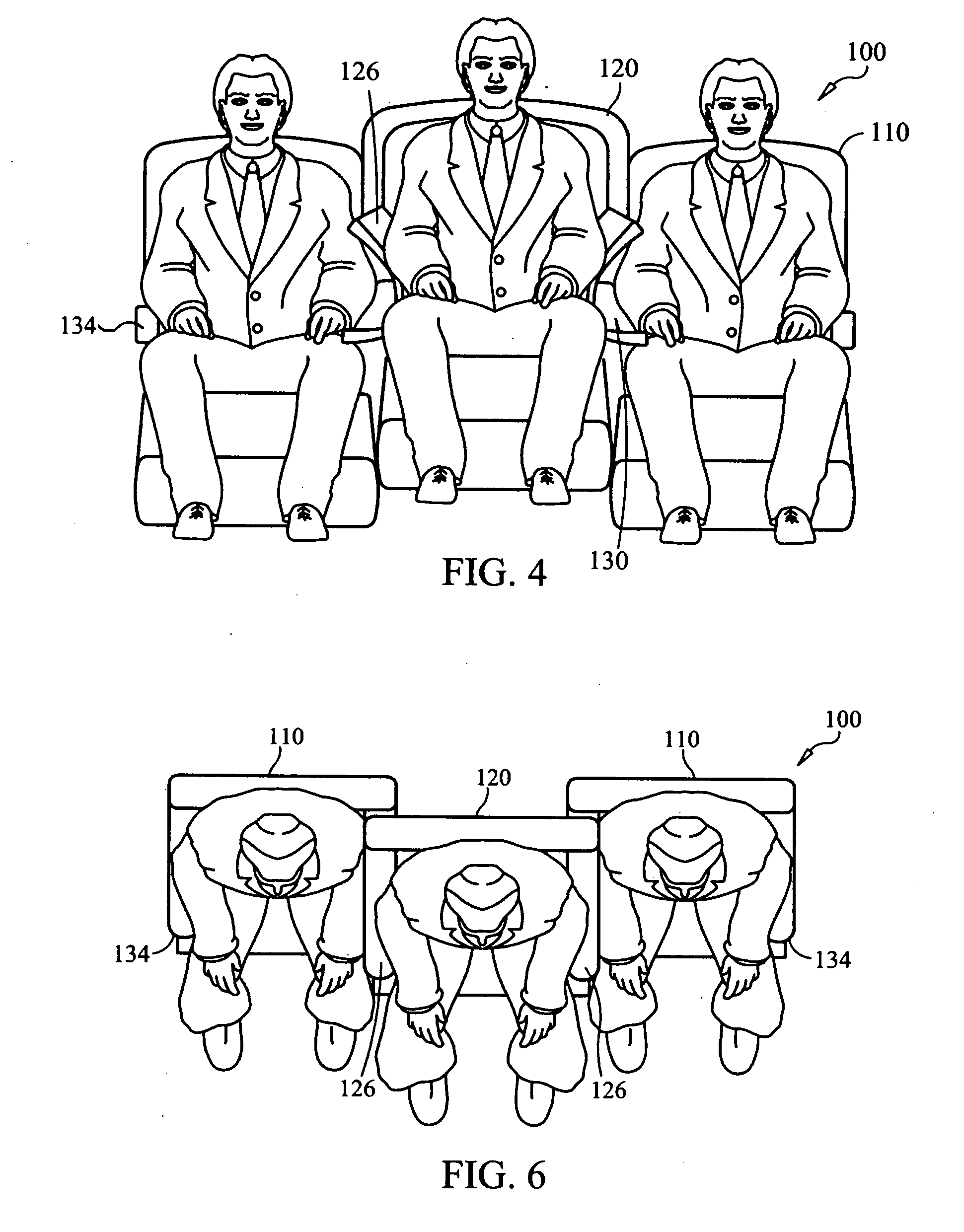Seating arrangement for a passenger airplane
a seat arrangement and passenger technology, applied in the field of seat arrangement of airplanes, can solve the problems of passenger, most undesirable seat, most uncomfortable seat, etc., and achieve the effect of increasing seat pitch or horizontal legroom
- Summary
- Abstract
- Description
- Claims
- Application Information
AI Technical Summary
Benefits of technology
Problems solved by technology
Method used
Image
Examples
Embodiment Construction
[0020] In the descriptions that follow, like parts are marked throughout the specification and drawings with the same numerals, respectively. The drawing figures are not necessarily drawn to scale and certain figures may be shown in exaggerated or generalized form in the interest of clarity and conciseness.
[0021] Typical examples of conventional seating formats in the economy class section of a commercial airplane are illustrated in FIGS. 1, 2 and 3. The seats are typically positioned in a straight row with a number of seats side-by-side, as shown in FIGS. 1, 2, and 3, including a section of the row with three seats side-by-side, shown as row 10. Row 10 depicts a typical three seat configuration and contains aisle seat 14, window seat 13, and middle seat 12 wherein middle seat 12 is between aisle seat 14 and window seat 13.
[0022]FIG. 2 shows an alternate three seat configuration where middle seat 12 is between two aisle seats 14. As illustrated in FIG. 1, aisle seat 14, window sea...
PUM
 Login to View More
Login to View More Abstract
Description
Claims
Application Information
 Login to View More
Login to View More - R&D
- Intellectual Property
- Life Sciences
- Materials
- Tech Scout
- Unparalleled Data Quality
- Higher Quality Content
- 60% Fewer Hallucinations
Browse by: Latest US Patents, China's latest patents, Technical Efficacy Thesaurus, Application Domain, Technology Topic, Popular Technical Reports.
© 2025 PatSnap. All rights reserved.Legal|Privacy policy|Modern Slavery Act Transparency Statement|Sitemap|About US| Contact US: help@patsnap.com



